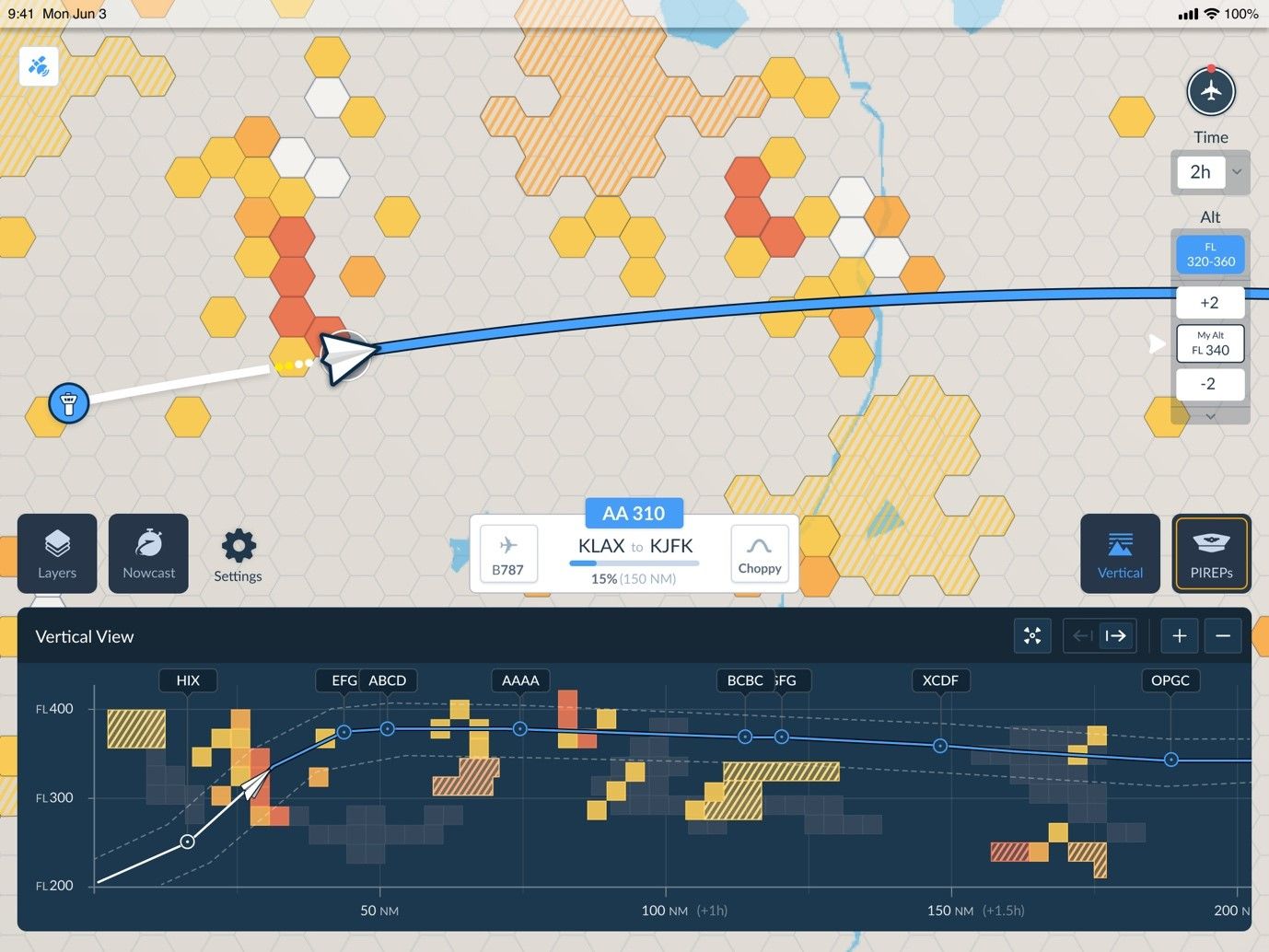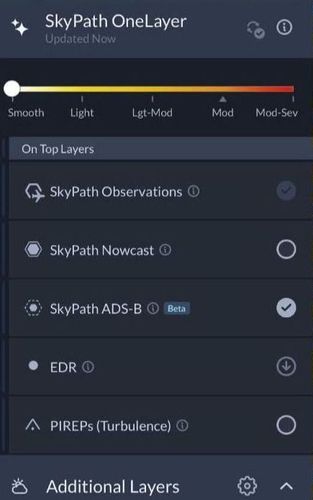Almost 75% of weather-related flight incidents occur in areas of turbulence, making this a major problem in the world of aviation. The challenge is that turbulence is difficult to accurately predict. This is because it is influenced by small-scale, energy-intensive flow patterns that are significantly smaller than the horizontal grid scale used by current global numerical weather prediction (NWP) models.
But, SkyPath Nowcasting is now changing the game.
The Nowcasting technique utilizes real-time turbulence observation and meteorological parameters to predict short-term turbulence, for up to 6 hours. With a detection rate of more than 90%, results so far have been phenomenal... and we are just getting started!

How do we do it?
In an article published in the Journal of Applied Meteorology and Climatology 2017*, R.D. Sharman and J.M. Pearson state: “It is impossible to directly and routinely forecast atmospheric motion at these scales, now or even in the foreseeable future.” So, the SkyPath team had to find a different approach.
Significant advances in computing power and machine learning (ML) tools, in recent years, have enabled us to leverage our gold-labeled observation data with research-based meteorological parameters, to make highly accurate predictions.
SkyPath collects 500 million turbulence samples a year - a paradise for data science teams - and the number is growing. This observation data is combined with meteorological parameters such as temperature, cloud fraction, vorticity, wind vectors, and more. We then upgraded it with more complex parameters, such as the vertical sum of total atmospheric moisture, etc.
What is our secret sauce?
- Significantly more observations than ever before.
- State-of-the-art machine learning model.
- Advanced, real-time data assimilation techniques.
Nowcasting, with its high-resolution turbulence prediction, represents a significant advancement in short-term turbulence in aviation.
Turbulence predictions are intuitively presented as color-coded hexagons.

Nowcasting layer (striped hexagons) + SkyPath observations (full hexagons)
The Nowcasting layer will be available by the end of the year as part of SkyPath version 5.0, and the SkyPath eco-system, SDK, and APIs.
With systems like SkyPath leading the way, the future looks brighter for safer and more predictable air travel.
- Prediction of Energy Dissipation Rates for Aviation Turbulence. Part I: Forecasting Nonconvective Turbulence, Journal of Applied Meteorology and Climatology 2017




